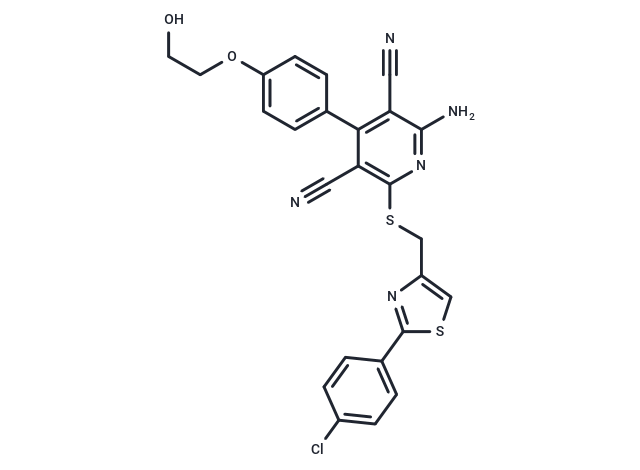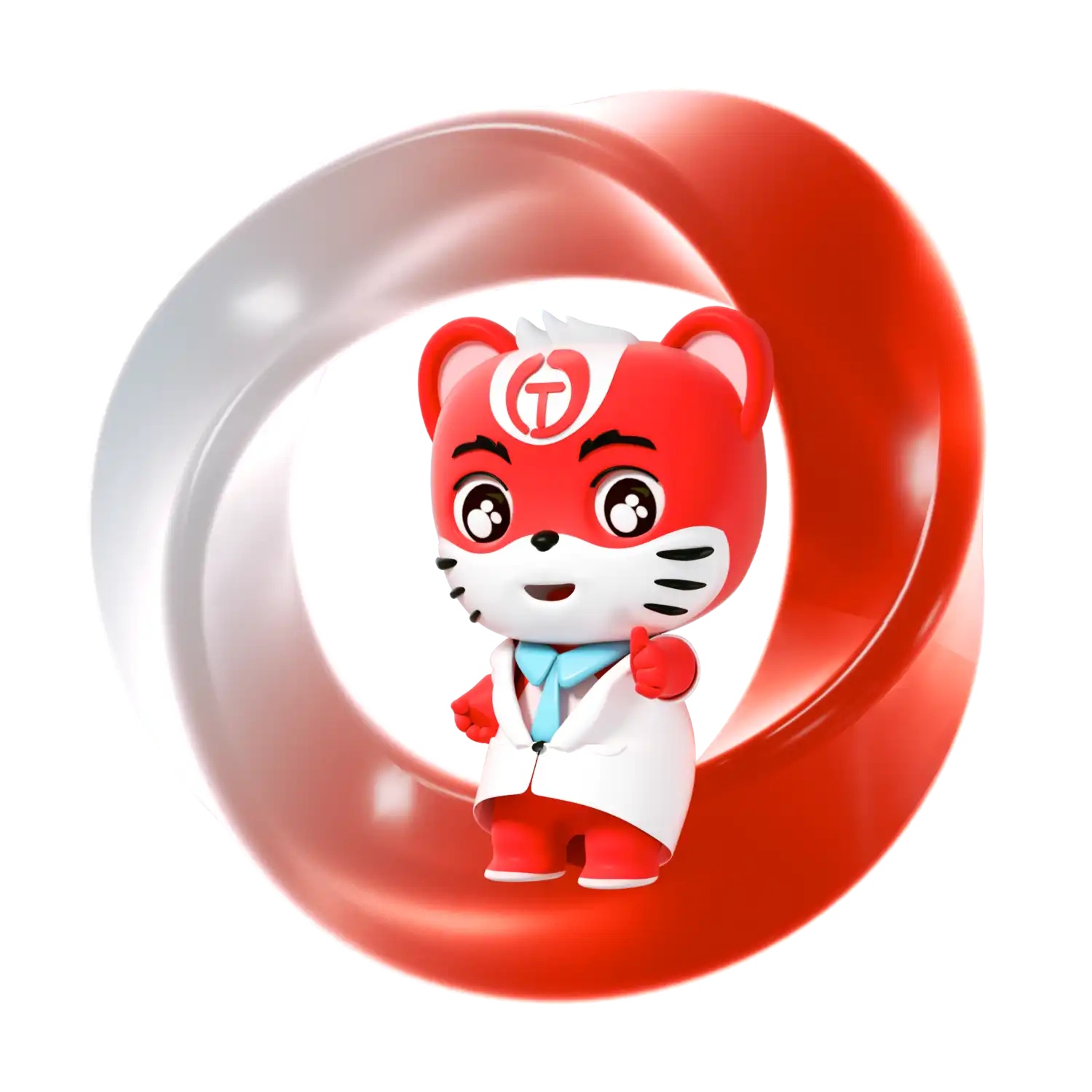购物车
- 全部删除
 您的购物车当前为空
您的购物车当前为空

Capadenoson (BAY 68-4986) 是 A1 腺苷受体的选择性激动剂。


为众多的药物研发团队赋能,
让新药发现更简单!
Capadenoson (BAY 68-4986) 是 A1 腺苷受体的选择性激动剂。
| 规格 | 价格 | 库存 | 数量 |
|---|---|---|---|
| 1 mg | ¥ 128 | 现货 | |
| 5 mg | ¥ 290 | 现货 | |
| 10 mg | ¥ 436 | 现货 | |
| 25 mg | ¥ 870 | 现货 | |
| 50 mg | ¥ 1,370 | 现货 | |
| 1 mL x 10 mM (in DMSO) | ¥ 377 | 现货 |
| 产品描述 | Capadenoson (BAY 68-4986) is a selective adenosine-A1 receptor agonist. |
| 体外活性 | 为了进一步阐明Capadenson的药理特性,采用标准全A1激动剂CCPA和A1拮抗剂DPCPX进行GTP转移试验。在大鼠皮质脑膜结合实验中,CCPA显示出4.2 nM的Ki值。在1 mM GTP存在下,该Ki值转变为64 nM,因此,CCPA的GTP转移值为15。DPCPX在GTP存在与否下显示出几乎相同的Ki值,其GTP转移值为1。Capadenson在结合实验中显示出24 nM的Ki值,在1 mM GTP存在下,该Ki值转变为116 nM,从而得出Capadenson的GTP转移值为5。 |
| 体内活性 | 在活体实验中,Wistar大鼠和SHR在进行应激测试(体力限制)的前5天预先用Capadenoson(0.15 mg/kg)处理。在第5天,进行为期2小时的应激测试。在限制应激测试前的5天内,Capadenoson的血浆浓度在服药后3小时测量,保持恒定,第4天和第5天的平均浓度分别为7.63 μg/L。 |
| 激酶实验 | Membranes from the human cortex are prepared. [35S]GTPγS binding is measured. Briefly, 5 μg of membrane protein is incubated in a total volume of 160 μL for 2 hr at 25°C in a shaking water bath. [35S]GTPγS binding in control incubations and in the presence of Capadenoson showed a linear time course up to this incubation time. Binding buffer contained 50 mM Tris/HCl, pH 7.4, 2 mM triethanolamine, 1 mM EDTA, 5 mM MgCl2, 10 μM GDP, 1 mM dithiothreitol, 100 mM NaCl, 0.2 units/mL adenosine deaminase, 0.2 nM [35S]GTPγS, and 0.5% bovine serum albumin. Non-specific binding is determined in the presence of 10 μM GTPγS. Incubations are terminated through filtration of the samples over multiscreen FB glass fiber filters followed by two washes with binding buffer. The filters are dried, coated with scintillator and counted for radioactivity. Binding curves of [35S]GTPγS are analyzed by nonlinear regression using GraphPad Prism. |
| 动物实验 | A total of 14 Wistar rats and 18 SHR (bodyweight 200-50 g, all-female) underwent experiments to evaluate the exocytotic, stimulation-induced NE release during electrical field stimulation. Rats are killed by an injection of pentobarbital i.p. (0.5 mL/100 mg body weight), and hearts are rapidly excised, and placed in ice-cold Krebs-Henseleit solution (KHL). They are quickly mounted on a Langendorff apparatus for retrograde perfusion with KHL. Perfusion rate is kept constant at 10 mL/min, the temperature is adjusted to 37°C, and the pH to 7.4 through bubbling with 5% CO2/95% O2. Via an inflow line desipramine at a concentration of 10?7 M is added to the perfusion buffer. After an equilibration period of 20 minutes, electrical field stimulation is commenced via two metal paddles adjacent to both sides of the beating heart for 1 minute (5V, 6 Hz). We collected the efflux in plastic tubes the minute before, during, and 3 minutes after the stimulation. These are rapidly frozen in liquid nitrogen and stored at ?20°C till analysis. The NE release is calculated as the cumulative release induced by electrical stimulation. After the first stimulation (S1), the study drug Capadenoson at concentrations of 30 μg/L (6×10^?8 M) or 300 μg/L(6×10^?7 M), or CCPA (10^?6 M), respectively, are added via separate perfusion lines for 30 minutes. After this time a second stimulation (S2) is executed to determine the effect of the drugs on NE release compared to the first stimulation. The effect of each pharmacological intervention is analyzed by calculating the ratio of NE release induced by the second and first stimulation (S2/S1 ratio). |
| 别名 | 卡帕诺生, BAY 68-4986 |
| 分子量 | 520.03 |
| 分子式 | C25H18ClN5O2S2 |
| CAS No. | 544417-40-5 |
| Smiles | Nc1nc(SCc2csc(n2)-c2ccc(Cl)cc2)c(C#N)c(-c2ccc(OCCO)cc2)c1C#N |
| 密度 | 1.51 |
| 存储 | Powder: -20°C for 3 years | In solvent: -80°C for 1 year | Shipping with blue ice. | |||||||||||||||||||||||||||||||||||
| 溶解度信息 | DMSO: 70 mg/mL (134.61 mM), Sonication is recommended. H2O: Insoluble | |||||||||||||||||||||||||||||||||||
溶液配制表 | ||||||||||||||||||||||||||||||||||||
DMSO
| ||||||||||||||||||||||||||||||||||||
评论内容